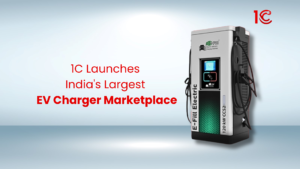
1C launches nation's largest EV charger marketplace, bringing chargers from renowned OEMs under a singlemplatform, offering convenience & options for EV owners.
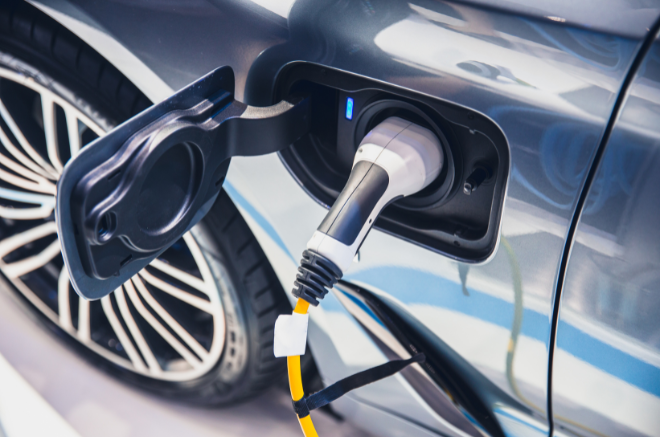
A.C. and DC charging are the two different methods of charging Electric vehicles. A.C. is the alternating charging, and Dc is the direct charging. It becomes essential to understand the fundamental differences between AC and DC charging to choose the right type for your Electric vehicle, based on charging speed, mobile charging, EV home charging station, distance is another aspect to consider and many more. We have discussed the key differences in the article further.
AC, or alternating current, is a kind of electrical flow that changes direction regularly—it goes back and forth. This type of power can be made by renewable sources such as wind or hydropower turbines. AC is particularly useful for traveling across long distances efficiently. That’s why almost all electricity grids around the world use AC power. When you plug something into the outlets in your home or office, you tap into AC power. This alternating nature of AC makes it adaptable and suitable for various power generation and distribution needs.
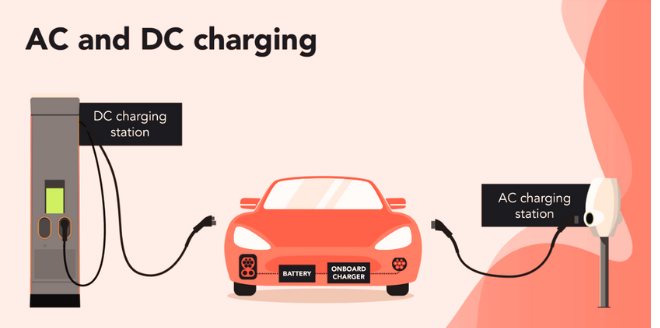
Direct Current (DC) moves straight and can be generated using renewable sources like solar panels. It finds use in storing energy, running electronic devices, and powering L.E.D. lights. In storing energy, batteries are essential for storing D.C. power. When you charge your laptop, the charger changes the AC power from the grid into D.C. power, which your laptop’s battery uses.
There are two types of electricity transmitters for charging electric vehicles: Alternating Current (A.C.) and Direct Current (D.C.) power. The electricity grid gives A.C. power, but electric car batteries need D.C. power. The big difference between AC and DC charging is where the A.C. power changes to DC. It can happen outside or inside the car. DC chargers are usually bigger because the converter is in the charging station. This makes them faster than AC chargers at charging the battery.
On the other hand, if you use AC charging, the changing only starts inside the car. Electric cars have a built-in AC-DC converter called an “onboard charger” that changes AC power to DC power. After this, the car’s battery gets charged.
According to the theory and benefits of DC chargers over AC charger, one can install DC chargers at home, but there are better ideas than that.

DC chargers cost much more than AC chargers. They need more space and have complex parts, like active cooling. You also need a strong connection to the power grid. So, for home charging, an AC charger is a better choice. DC charging points are usually found along highways.
Only AC chargers can be moved, and there are two main reasons:
Another big difference is the speed of charging. DC chargers have a converter inside them. This means power from the DC charging station goes straight into the battery, skipping the car’s onboard charger. This makes charging with direct current ten times faster than charging with alternating current.
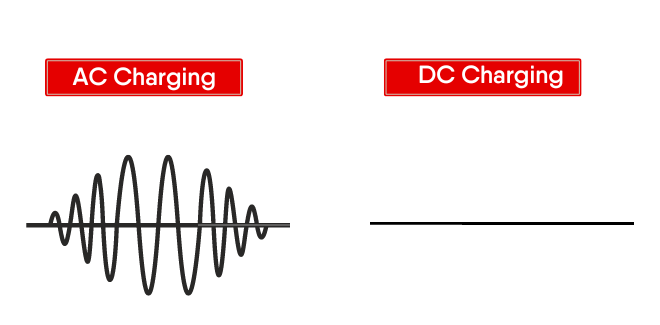
Another important contrast between AC and DC charging is how their power output changes during a charging session, referred to as the EV charging curve.
Deciding between a 30-minute and a 5-hour charging session might seem straightforward. However, it’s more complicated, especially if you’re not concerned about the cost difference between fast (DC) and regular (AC) charging.
Using a DC charger frequently can negatively impact the battery. This isn’t just a made-up story; it’s a real caution from some electric car manufacturers.
A study conducted by Geotab discovered that cars relying on rapid charging more than three times a month experienced a 10% increase in battery issues after 48 months. This was particularly noticeable in hot climates.
One significant difference between AC and DC charging is the cost. AC chargers are more affordable than DC chargers. DC chargers have a higher initial cost and involve additional expenses for installation and connecting to the power grid.
If saving time is crucial, using a D.C. power point can be faster, even if it requires a higher payment. However, if you can charge your electric vehicle near your workplace, there’s usually no need to spend extra on super-fast charging. Home charging is the most economical choice, and investing in your charging station is cost-effective.
Feature | A.C. Charging | DC Charging |
Power Direction | Alternates regularly, changing direction periodically | Flows consistently in one direction |
Power Generation Source | Typically, from the electricity grid | Renewable sources like solar panels can generate it |
Long-Distance Transmission | Efficient for long-distance transmission | Efficient for shorter distances, often used locally |
Charging Speed | Slower compared to D.C. charging | Faster charging, typically used for quick charging |
Charging Curve | Flat, consistent power delivery | Decreasing curve as the battery approaches full capacity |
Application | Commonly found in homes and offices, it is suitable for regular charging | Used in fast-charging stations, ideal for quick refueling |
Energy Storage | Not typically used for energy storage | Widely used for storing energy in batteries |
Types |
|
|
Example | Wall outlets in homes, office chargers | Fast-charging stations along highways, rapid chargers |
AC charging is commonly used for everyday charging in homes and offices, offering a cost-effective solution. On the other hand, DC charging provides faster charging at dedicated stations, making it suitable for quick refuelling, especially along highways. The choice depends on factors like charging speed requirements and infrastructure availability, contributing to the broader shift towards sustainable electric vehicle use.
The choice between AC and DC chargers depends on specific needs. AC chargers are suitable for regular use at home and offices due to their cost-effectiveness. In contrast, D.C. chargers are favoured for faster charging at dedicated stations, making them ideal for quick refuelling, especially on highways.
D.C. chargers are faster because they have a built-in converter. This allows power to go straight into the battery, bypassing the car’s onboard charger. This efficiency makes D.C. charging ten or more times faster than A.C. charging.
Most mobile chargers use A.C. power. When you charge your phone, the charger converts the AC power from the grid into D.C. power suitable for your phone’s battery.
A.C. charger stands for Alternating Current charger.
D.C. charger stands for Direct Current charger.
1C launches nation's largest EV charger marketplace, bringing chargers from renowned OEMs under a singlemplatform, offering convenience & options for EV owners.
Explore the surprisingly long history of electric vehicles. Start from 1830s with dawn of EVs, go through 1900s when electric cars dominated the roads, move through the 60s, when ICE rose to popularity, and cruise through the 21st century to understand the rebirth of electric vehicle in automobile industry.
Can you charge your EV to 80% in 10 minutes? Discover the truth about fast charging and how 1C helps you find verified stations. Stay informed & charge wisely!
Amidst EV evolution, the 1C app has emerged as a gamechanger, setting new standards in the market. But what makes it stand out in an increasingly crowded space?
1C EV Charging App can help EV owners in Delhi-NCR in planning road trips. It eliminates the uncertainty of long drives with EV, ensuring a smooth journey.
1C EV Charging App has taken a proactive approach to ensure that EV owners can access 100% verified charging stations whenever and wherever they need them.


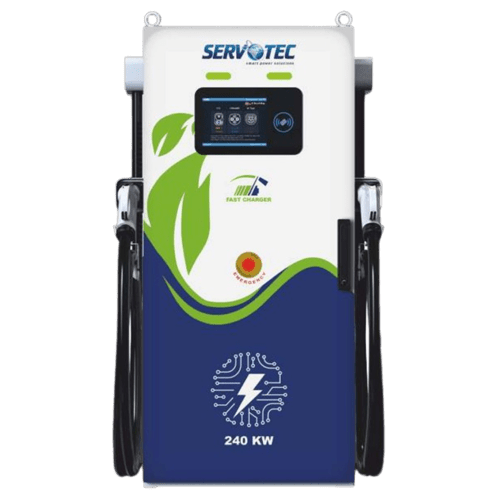
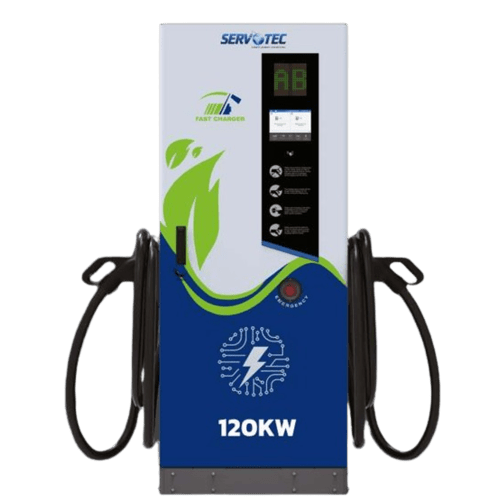
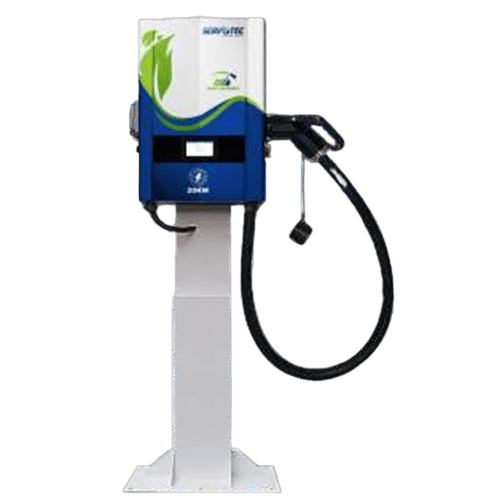

© 2024 Massive Mobility Private Limited. All rights Reserved